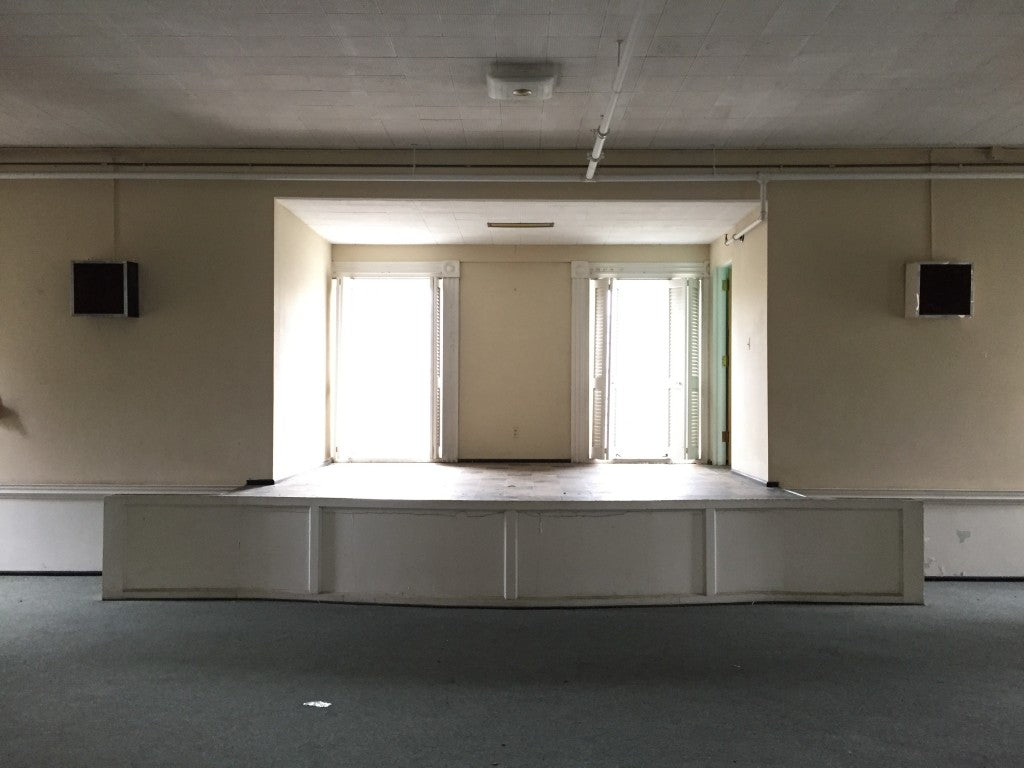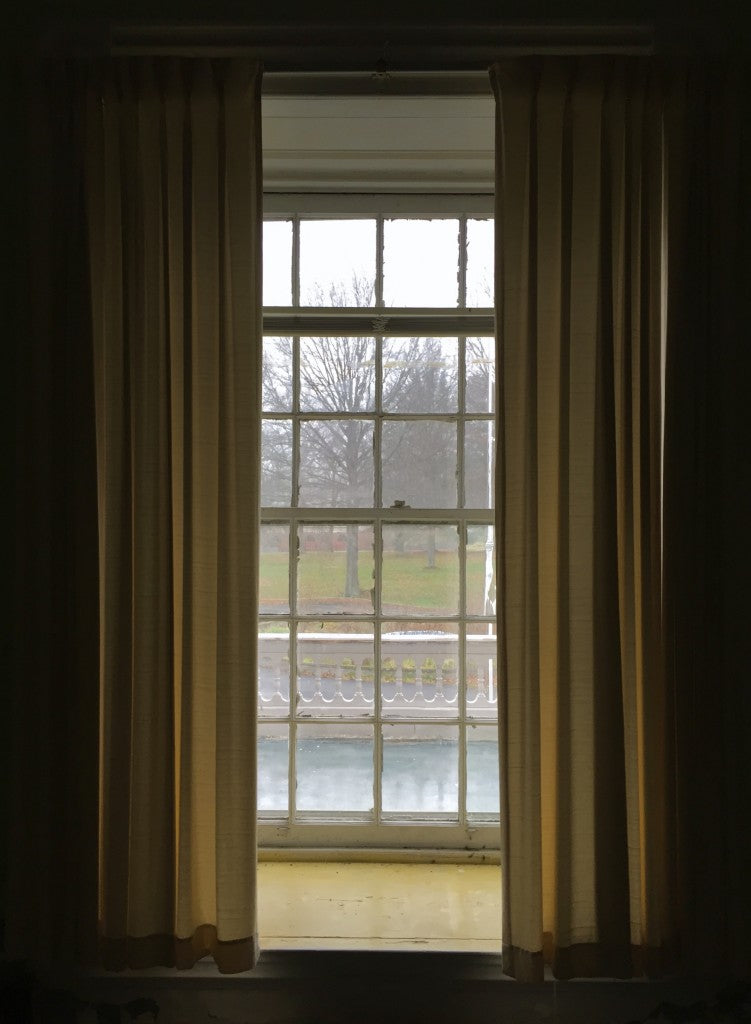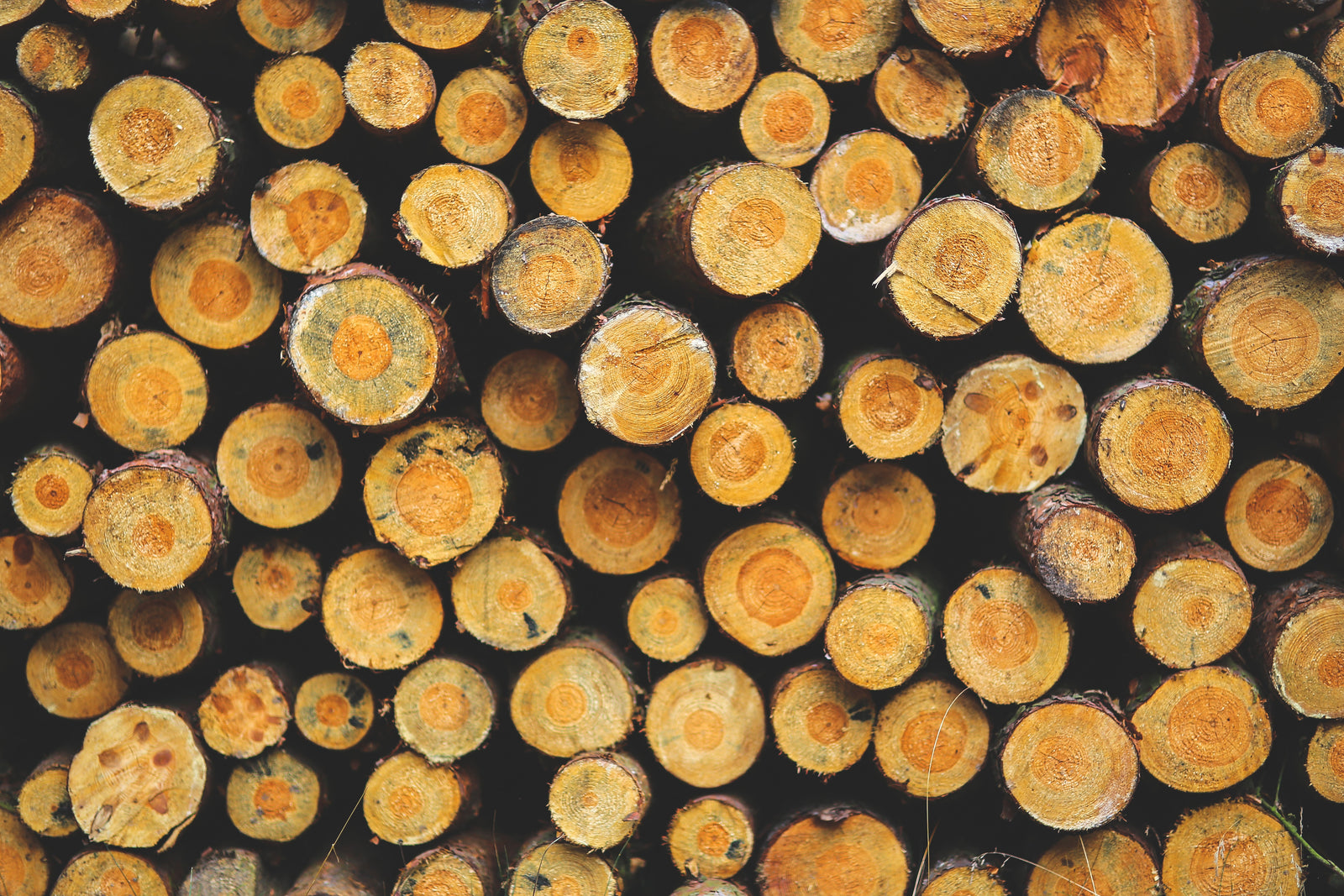FREE U.S. SHIPPING ON $65+ ORDERS.
FREE U.S. SHIPPING ON $65+ ORDERS.
Menu title
This section doesn’t currently include any content. Add content to this section using the sidebar.
Your headline
Image caption appears here
$49.00
Add your deal, information or promotional text
The thing that struck me about the Rural Entrepreneurship Summit was the granola. I mean, it wasn't the only thing—there were also amazing small business people in the room along with heavy hitters like Aaron Sporck from U.S. Senator Shelly Moore Capito's office and Ray Daffner, Entrepreneurial Development Manager at the Appalachian Regional Commission —but this was some seriously good granola. It was sweet without being syrupy, and it had a smoky undertone that surprised me.
By sheer luck, I was seated next to the fella who made it. His name is Jacob Gahn. Tall and bespeckled with a wide smile and a ponytail, Jacob is the kind of guy you picture whipping up batches of granola in his kitchen, and that's actually how he and his wife Carolyn started their company Sweetgrass.
"Sweetgrass has been with us for longer than we've been a family," he said, "From the time we were just young pups, living out in a little cabin and making granola by the tray full."
From these humble roots, the couple added employees and new products. They also added one of Appalachia's favorite ingredients, sorghum. That twist gave their granola its signature flavor and helped capture the attention of major retailers. Today, Sweetgrass products can be found in Kroger and Whole Foods supermarkets with the phrase "lightly sweetened with locally grown sorghum" right on the bag.
Oddly, sorghum came up more than once during the Blacksburg, Virginia event, which was hosted by Village Capital, a firm that drives entrepreneurship outside California, Massachusetts, and New York. That's where some 78 percent of venture funds currently go. None of these states face problems like West Virginia, where a lot of land has been contaminated by coal, but biomass specialist Joe James has found a natural, sustainable way to clean it—by growing sorghum. In this case, it's a non-edible variety, one that actually pulls problem substances from the soil. When planted over old surface mines, mine tailings, water collection sites, and coal fine ponds, the plant jumpstarts the restoration process, capturing all kinds of nasty substances. While you wouldn't want to eat this sorghum, it can be made into products, ranging from plastic fillers to a renewable form of bio-coal, which Joe's company, ATP-WV, plans to sell to industry customers.
Speaking of coal, it's no secret that the traditional kind, the fossil fuel, is losing its market fast, which leaves many miners out of work. As of March 2016, the U.S. had just 56,700 remaining coal jobs, down from a high of 178,300 in April 1985. Amid these depressing figures, Rusty Justice saw an opportunity. He's the fourth generation in his family to live in Pikeville, Kentucky, the heart of coal country, and he knows that, contrary to every stereotype, former miners have what it takes to become computer programmers. Rusty set about proving it when he co-founded BitSource, a software development firm that hails from his hometown holler. Entering its second year, Bitsource has trained ten mountain people, including many former miners, to program websites. While the small business' leaders acknowledge that this is just the start, it's been enough for Forbes magazine to name Bitsource as one of seven world-changing companies and for Justice and crew to land their first Fortune 500 client.
Each of these start-ups has an element that's unique to Appalachia. Each either pulls from the area's traditions or addresses area problems. This distinction doesn't escape Village Capital CEO Ross Baird. He sees a lot of people outside Appalachia wringing their hands over the region. "But few ever go there to understand how people live every day, what challenges they're facing, and what resources they have."
That's what it will to take to spread the wealth and discover true innovation, he said, looking outside venture capital's big three states. All across the country, entrepreneurs are solving real problems right in their communities. It's just a matter of finding them, according to Baird, and then "working side by side to improve their businesses."
The good folks at WVTF Public Radio invited me to talk about Trump's appeal with working class Americans and the revival we're seeing in Appalachia.
It's okay to sit in the yard in your underwear.
The second coming already happened. It was called The Allman Brothers Band.
Everyone loves an ABC Store gift card for Christmas.
Ain't nothing more fun than bouncing along country roads in the back of a '78 Chevy truck, except driving a '78 Chevy truck on country roads.
If you can drive a '78 Chevy truck, you can drive a tank.
Wear more than a corduroy jacket when you go deer hunting.
You can get a decent car for $25.
Never make your kid mow when it's over 100 degrees.
Chainsaws are fun!










 William Jones under the resort's gracious porticos.[/caption]
William Jones under the resort's gracious porticos.[/caption] The resort's elegant dining room was converted to a chapel for retirement home residents.[/caption]
The resort's elegant dining room was converted to a chapel for retirement home residents.[/caption] The dining room during its heyday.[/caption]
The dining room during its heyday.[/caption] The oldest structure at Sweet Springs, the jail predates the resort by some forty years.[/caption]
The oldest structure at Sweet Springs, the jail predates the resort by some forty years.[/caption] Furnishings and office supplies hint at Sweet Springs' past.[/caption]
Furnishings and office supplies hint at Sweet Springs' past.[/caption]
Coal is dead. There, I said it. It's a tough pill for Appalachia to swallow—where coal has underpinned local economies for more than a century, where it's given folks who hold nothing but high school diplomas a path to the middle class—but those days are going, going, gone.
Local leaders, though, didn't get the memo. Maybe they're holding out for some imaginary coal revival. Maybe they don't have the skills to attract new industries or foster entrepreneurship. Maybe they're just scared. Why doesn't matter much. Their inaction leaves many thousands of mining families in dire straights.
We've all heard about former miners working for a fraction of their prior pay, selling their trucks, cars, or even homes to put food on the table. We've read about soaring public assistance rates due, in part, to laid off miners dragging themselves to social service offices, hats in hands, having to ask for help. It's like there's a big gash right across the heart of Appalachia, and no one is even applying direct pressure.
Sure, a bill is weaving through Congress that could infuse $1 billion into coal country, but the Tea Party has a stranglehold on Washington. Sticking to their promise to downsize government, these extremists kill anything that resembles new spending, even if it might help the people who elected them. These days, it's easier for a camel to pass through the eye of a needle than for a social program to pass on the hill, and some folks are just tired of waiting.
In eastern Kentucky, former miners are taking economic recovery into their own hands. They've started BitSource, a training ground for would-be coders and a consultancy that hopes to land clients from around the world.
Writer Lauren Smiley recently visited this crew and in the below article, captures the kind of determination and ingenuity it'll take to turn mining communities around. But is it enough? Can a tech start-up make it big in a Kentucky coal town? And how else can we help our Appalachian neighbors get back on their feet?
If you have coal stories or ideas for improving life in coal country, please leave a comment below.
***
Rusty Justice doesn’t think about Michael Bloomberg very often. But when he does — even if it’s just for a moment — it’s like remembering the gloating rich kid who stole his lunch.
The distaste started when the New York City billionaire donated $50 million to the Sierra Club’s Beyond Coal campaign back in 2011, and continued when he poured in another $30 million this year. Rusty, you see, runs a land-moving company in Eastern Kentucky, and the anti-coal movement is playing a big role in systematically closing down the industry he’s worked around all his life.
Say what you will about the long-term environmental effects (Justice, for one, is very pro-coal) but the impact on the area’s one-source economy has been brutal. Some 8,000 miners have been laid off in the last four years — that’s more people than the entire population of Justice’s hometown, Pikeville. On the road to a cleaner energy future, the surrounding neck of Appalachia is looking like roadkill.
But Rusty’s unease with Bloomberg turned into a gut-deep animus last year, when the self-confessed hillbilly—if you’re from this part of the world that’s a self-identifier, not an insult—sat down for his weekly, three-hour, Saturday morning news-reading session. That’s when he came across Bloomberg’s latest jab.
“You’re not going to teach a coal miner to code.”
I'm such a slacker. On Wednesday night, The Mine Wars premiered on the PBS series American Experience, and I have to admit I missed it. (If it's any comfort, PBS, I was binge watching Downton Abbeyat the time!) Luckily, this groundbreaking mini-series is streaming on PBS.org, and it's an event we all should see.
In the earliest days of the 20th century, our region was being transformed. Newly established coal companies, almost always owned by outside interests, offered steady work in our mountains, an area that, until then, had relied mostly on subsistence farming. But regular pay came at a price.
“In our town we have many good things, good churches and schools,” one miner summarized, “but there is another thing of much more importance that the coal operators have intentionally overlooked — our freedom.”
While coal companies provided housing for miners and their families, they also turned Appalachian natives into the capitalist equivalent of serfs. Following a feudal model, they created coal towns with no elected officials, no democratic process or even local police forces. Instead, companies hired private guards armed with rifles and machine guns to police the towns, a practice miners detested. Thy even paid in their own currency, called scrip, which could only be used at company-owned stores.
As awareness of this exploitation grew, union leaders focused their attention on coal country, and miners faced a difficult choice—live in steady subjugation or fight for their rights.
Over the next several decades, violence erupted, a war that has been all but forgotten. Schools have rarely taught about it. No books or films on the topic have seen wide distribution. Appalachia's mine wars have barely been a blip in the telling of U.S. history...at least, until this week.
American Experience is the nation's most-watched history series, one that reaches millions of viewers and even influences classroom conversations through popular teacher guides. By airing The Mine Wars, the show is moving this bloody Appalachian story from the fringe to the mainstream, taking us a big step closer to rewriting history.
Do you feel like this is a story worth telling? Is coal part of your family story? And if you've seen the show, what did you think?
Please leave a comment below.
James Napier wears a lot of hats. Monday through Friday, he's a sociology professor at Mountwest Community & Technical College, where he helps students look beyond their own experiences and see larger social patterns. Seven days a week, he's an Appalachian native, one who is both proud of his roots and sometimes at odds with them. That's because James is also gay, and in some circles, that difference alone can be brutal.
But James' last hat is the one that really makes him stand out. In this case, the hat is actually a blond, teased out wig. When he wears it with shimmering women's clothes and fake lashes, James is transformed into another person entirely—the drag persona of Ilene Over.
Now, Ilene is a character, and by that I mean, two things. First, she's bawdy, funny, and whip smart, marrying James' sharp intellect with her own hilarious take on Appalachian life. Second, I mean that Ilene is an act, a performance. As James explains below, people cross gender lines for many reasons. For him, it's a chance to experience some glitz, some glamour, and like Flip Wilson, RuPaul, or Tyler Perry, to get people laughing.
That's exactly what Ilene hopes to do on October 22, when she performs Rainbow in the Mountains: Confessions of an Appalachian Drag Queen. The show starts at 7 PM in Virginia Tech's Shanks Hall, rooms 370/380. With a mix of storytelling, stand up, and lecture, it promises to be a one-of-a-kind show.
*
TR: Let’s start by talking about our mountains. You refer to yourself as an Appalachian drag queen. How is that different from, say, a Californian drag queen or a New England drag queen?
I believe what sets all Appalachians apart are the values we hold that are unique to us. Loyal Jones discusses these in his book Appalachian Values—individualism, self-reliance, pride, religion, neighborliness and hospitality, familism, personalism, and love of place. To be queer in Appalachia, I believe, puts us at odds with some of these values. For example, we have a love of place but may want to go somewhere we can live fully and openly as a queer person.
TR: It's interesting you mention moving. I think you saw my recent Facebook post pointing out that big cities aren’t always safe havens for GLBT people. According to 2013 FBI records, a GLBT person was 46X more likely to experience a hate crime in DC than neighboring Virginia, where I was raised. How have you been treated in West Virginia as a drag queen and a gay man?
JN: I don’t think the stats tell the complete truth. I believe a lot of incidents are not reported or misreported. There is resistance amongst rural law enforcement in reporting queer related issues. There seems to still be this taboo about even talking about queer stuff. There is also the fear factor for victims.
I also believe rural queers have this romanticized notion of queer life in the big city. Some of it is reasonable I think—support groups, activities, safety in numbers. But you are correct in pointing out acts of hate occur even in these gay meccas. They are not perfect places.
TR: And back to drag. It is its own category, distinct from transsexuals, right?
JN: Yes. There are various categories of crossing gender lines. One can never totally generalize to a group, but in general transvestites wear the clothing of the opposite gender for sexual gratification, Transsexuals seek to live and function as the opposite gender. Drag Queens generally enjoy the sparkle, the shine, the theater, the attention, but do not want to live as a woman nor is it a sexual fetish. Drag has been around for hundreds of years—the court jester challenging culture and society, pushing boundaries.
TR: For anyone who’s never felt the urge to dawn the opposite gender’s clothes, I imagine the big question is why? What inspires James to get on stage as Ilene Over?
JN: I saw my first drag show and was totally enamored with the flash, the sparkly clothing, the larger than life presence. I immediately thought, “Hell I can do that and probably better!” What kept me doing it—aside from good tips—was the responses from the audience. I loved seeing people’s faces, the smiles, hearing the clapping and cheering, and most of all hearing the laughter!
TR: How was all this for you growing up in a West Virginia holler?
JN: Growing up gay was hard as Hell. I constantly listened to my family and others talk about the “queers” in whispers and sometimes blatantly say hateful things. I knew I was different from a very young age, and I learned to hide a huge part of myself. To this day, no one in my family really knows me. I was bullied and made fun of for being different, and, of course, once word got out that when we played superheroes, I played the part of Wonder Woman, my life was hell. There were no TV shows with role models. There were no support groups. I was by myself and lonesome and frightened. It induced a lot of self-loathing that I still struggle with to this day.
TR: I get that. While I've been treated really well as a gay man in Appalachia, life as a teen in the 80's and early 90's was hard. My family was supportive, but some school kids were just brutal. Thankfully, attitudes are changing, and you're helping make that happen. One way is by being a sociologist drag queen—not many of those out there! How does your academic discipline inform your act?
JN: No, there aren’t many of us out there. Being a sociologist informs everything in my life, including my drag and performance. I can’t help but watch and analyze. I believe it provides another angle for me to evaluate my experiences as a person, as a queer Appalachian, and as an Appalachian drag queen.
TR: And it certainly makes for a rich show, adding brain power to the mix. Break a leg next Thursday, and if you can, check back in and let us know how it goes!
...and get 10% off your first order!
We use cookies on our website to give you the best shopping experience. By using this site, you agree to its use of cookies.
Plus first dibs on sales, the latest stories, & heaps a'luvin from us.
